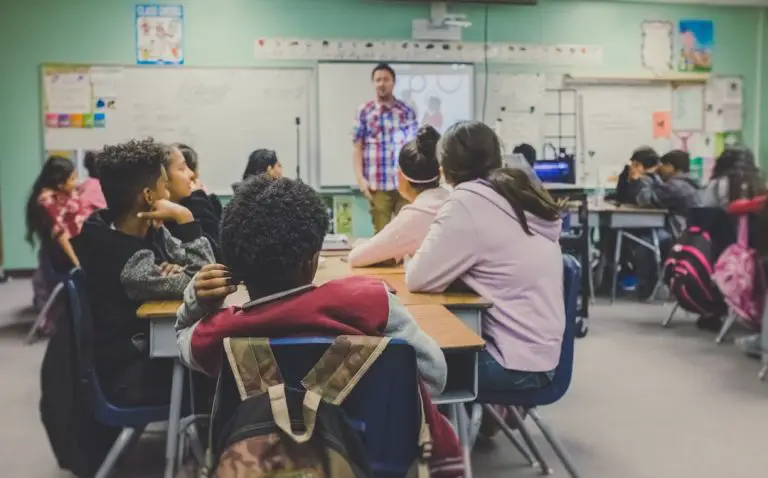Support our educational content for free when you buy through links on our site. Learn more
What Are the 6 Strategies for Effective Learning? Unlock Your Brain! 🧠
Ever caught yourself cramming all night only to forget everything the next day? You’re not alone—and there’s a smarter way to learn. Imagine transforming your study habits with six scientifically proven strategies that make information stick like glue. From spacing out your sessions to mixing up topics, these techniques have helped countless students and educators boost memory, deepen understanding, and ace exams without the stress.
In this article, we’ll unravel the secrets behind these six powerhouse strategies, backed by decades of cognitive science. Whether you’re a student, teacher, or lifelong learner, you’ll discover practical tips, real-life success stories, and tools to supercharge your learning journey. Ready to stop spinning your wheels and start learning smarter? Let’s dive in!
Key Takeaways
- Spaced Practice: Spread out study sessions to beat the forgetting curve and strengthen long-term memory.
- Retrieval Practice: Actively test yourself to enhance recall and identify knowledge gaps.
- Elaboration: Connect new info to what you already know for deeper understanding.
- Interleaving: Mix different topics or skills to improve discrimination and retention.
- Concrete Examples: Use real-world scenarios to clarify abstract concepts.
- Dual Coding: Combine words and visuals to engage multiple brain pathways.
Boost your learning with top tools like Anki and Quizlet for spaced repetition, or organize ideas visually with XMind and Notion.
👉 Shop Learning Tools on:
Table of Contents
- Quick Tips and Facts About Effective Learning Strategies 🚀
- The Science and History Behind the Six Strategies for Effective Learning 🧠📚
- 1. Spaced Practice: Mastering the Art of Timing Your Study Sessions ⏳
- 2. Retrieval Practice: Why Testing Yourself Beats Rereading Every Time 🎯
- 3. Elaboration: Making Connections That Stick Like Super Glue 🧩
- 4. Interleaving: Mixing It Up for Maximum Brainpower 🔄
- 5. Concrete Examples: Turning Abstract Ideas Into Real-World Wins 🌍
- 6. Dual Coding: Combining Words and Images to Supercharge Memory 🎨📝
- How to Apply These Six Strategies in Everyday Learning and Teaching 🏫✨
- Common Pitfalls and How to Avoid Them When Using Effective Learning Techniques ⚠️
- Real-Life Success Stories: How These Strategies Changed Learning Outcomes 🎉📈
- Quick Hacks and Tools to Boost Your Learning Strategy Game 🛠️💡
- Conclusion: Wrapping Up the Six Strategies for Lifelong Learning 🎓✅
- Recommended Links for Deepening Your Knowledge on Effective Learning 🔗
- FAQ: Your Burning Questions About the Six Strategies Answered ❓🔥
- Reference Links: Trusted Sources Behind These Learning Strategies 📚🔍
Quick Tips and Facts About Effective Learning Strategies 🚀
🧠 Did you know that simply rereading notes is one of the least effective learning strategies? 🤯 It’s true! We, at Teacher Strategies™, are passionate about equipping educators with research-backed strategies that actually work. And that’s why we’re diving deep into the six strategies for effective learning, proven to enhance memory, boost understanding, and improve long-term retention. Buckle up, because we’re about to revolutionize the way you think about learning!
Here’s a sneak peek at what we’ll be exploring:
- 🧠 Active learning trumps passive learning: Say goodbye to monotonous rereading and hello to engaging activities that force your brain to work!
- ⏰ Timing is everything: Discover the power of spaced practice and how strategic timing can make or break your learning efforts.
- 💪 Challenge yourself for better results: Embrace the struggle! Learning is most effective when it’s challenging, but not overwhelming.
- 🎨 One size doesn’t fit all: Explore diverse strategies and find the perfect blend that complements your unique learning style.
Ready to unlock your learning potential? Let’s go!
The Science and History Behind the Six Strategies for Effective Learning 🧠📚

These six strategies aren’t just trendy educational buzzwords. They’re rooted in decades of cognitive psychology research, exploring how our brains acquire, process, store, and recall information. Pioneers in the field like Henry Roediger III and Peter C. Brown have dedicated their careers to understanding the science of learning, and their findings have revolutionized the way we approach education.
Here’s a glimpse into the historical evolution of these strategies:
- Early 20th Century: The importance of spaced practice emerges through Hermann Ebbinghaus’s groundbreaking research on the forgetting curve.
- Mid-20th Century: The cognitive revolution shifts focus to internal mental processes, paving the way for deeper understanding of memory and learning.
- Late 20th Century: Researchers like Roediger and Brown conduct seminal studies on retrieval practice, highlighting its superiority over traditional study methods.
- 21st Century: The six strategies gain widespread recognition, with organizations like The Learning Scientists disseminating evidence-based resources for educators and learners worldwide.
The six strategies for effective learning represent a paradigm shift in education, moving away from passive, teacher-centered approaches toward active, student-centered learning experiences. And the best part? These strategies are constantly evolving as new research emerges, ensuring that we’re always equipped with the most effective tools for learning success!
1. Spaced Practice: Mastering the Art of Timing Your Study Sessions ⏳
Let’s face it: cramming might get you through that looming deadline, but it’s like building a house of cards in a windstorm – destined to collapse. Enter spaced practice, the superhero of effective learning! This strategy is all about outsmarting your brain’s natural tendency to forget by strategically spacing out your study sessions over time.
Think of it like watering a plant: Would you drown it with a week’s worth of water all at once? Of course not! You’d give it small, consistent doses to ensure it thrives. The same principle applies to learning.
Here’s how to implement spaced practice:
- Break it down: Instead of marathon study sessions, divide your study material into smaller, manageable chunks.
- Schedule strategically: Review material at increasing intervals (e.g., 20 minutes now, 1 hour later, 1 day later, 1 week later).
- Use technology to your advantage: Leverage spaced repetition software like Anki or Quizlet to automate the process.
Spaced practice is a game-changer because it:
- Strengthens neural connections: Each review session reinforces the neural pathways associated with the information, making it stickier in your long-term memory.
- Improves recall: When you space out your practice, you force your brain to retrieve information from memory, strengthening the recall process.
- Reduces the forgetting curve: By revisiting material at strategic intervals, you counteract the natural decline in memory over time.
Teacher Strategies™ Tip: Encourage students to create their own spaced practice schedules, empowering them to take ownership of their learning. Provide them with tools and resources to make the process engaging and effective. You can find more helpful tips in our Lesson Planning category.
2. Retrieval Practice: Why Testing Yourself Beats Rereading Every Time 🎯
Remember those nail-biting pop quizzes back in school? Turns out, they weren’t just a tool for teachers to strike fear into our hearts! Retrieval practice, the act of actively recalling information from memory, is a learning powerhouse. It’s like doing weightlifting for your brain – the more you challenge yourself to retrieve information, the stronger your memory becomes.
Here’s the catch: Retrieval practice is most effective when it’s effortful. Simply rereading notes or highlighting passages might feel productive, but it’s like watching someone else lift weights at the gym – you’re not getting any stronger.
Put your knowledge to the test with these retrieval practice techniques:
- Flashcards: Create flashcards with questions on one side and answers on the other. Test yourself regularly, focusing on the ones you struggle with.
- Practice tests: Take practice tests or quizzes to simulate exam conditions and identify areas for improvement.
- The Feynman Technique: Explain a concept to someone else as if you were teaching it. This forces you to retrieve and articulate the information clearly.
Retrieval practice is a game-changer because it:
- Identifies knowledge gaps: Testing yourself reveals what you know and, more importantly, what you don’t know, allowing you to focus your efforts where they’re needed most.
- Strengthens memory pathways: The act of retrieving information from memory strengthens the neural connections, making it easier to recall in the future.
- Boosts long-term retention: Studies have shown that retrieval practice leads to significantly better long-term retention than passive study methods like rereading.
Teacher Strategies™ Tip: Incorporate low-stakes retrieval practice activities into your lessons, such as quick quizzes or exit tickets. This provides valuable feedback for both you and your students, allowing you to adjust your teaching and their learning strategies accordingly. For more insights, check out our article on What are the 6 key teaching strategies?
3. Elaboration: Making Connections That Stick Like Super Glue 🧩
Imagine trying to remember a random list of words versus weaving those words into a vivid story. Which scenario is more likely to stick in your mind? That’s the power of elaboration! This strategy is all about making connections between new information and what you already know, transforming isolated facts into a cohesive web of understanding.
Think of your brain as a giant filing cabinet: When you encounter new information, elaboration helps you file it away in the right drawer, making it easier to find later.
Here’s how to become an elaboration expert:
- Ask “why” and “how” questions: Don’t just passively absorb information. Dig deeper by asking yourself why something is true or how it works.
- Make connections to personal experiences: Relate new concepts to your own life, making the information more meaningful and memorable.
- Create analogies and metaphors: Analogies and metaphors help bridge the gap between the unfamiliar and the familiar, making complex ideas easier to grasp.
Elaboration is a game-changer because it:
- Enhances understanding: By connecting new information to existing knowledge, you create a deeper, more meaningful understanding of the material.
- Improves memory: Elaboration creates a richer network of associations in your brain, making it easier to retrieve the information later.
- Promotes active learning: Elaboration requires you to actively engage with the material, making learning more enjoyable and effective.
Teacher Strategies™ Tip: Encourage students to think beyond the textbook by asking open-ended questions that prompt them to make connections and elaborate on their thinking. Facilitate discussions and group activities that foster collaborative elaboration. You can find more helpful tips in our Instructional Strategies category.
4. Interleaving: Mixing It Up for Maximum Brainpower 🔄
Imagine practicing piano by playing the same scale over and over again. Sure, you might master that specific scale, but what about the rest of the piece? Interleaving, the practice of mixing up different subjects or skills during a study session, is like a cross-training workout for your brain. It keeps your mind sharp and prevents you from getting stuck in a rut.
Think of it like this: If you always eat the same meal, your taste buds might get bored. Interleaving is like adding variety to your learning diet, keeping your brain engaged and preventing mental fatigue.
Here’s how to interleave your way to success:
- Mix up your subjects: Instead of studying one subject for hours on end, alternate between different subjects or topics.
- Vary your practice problems: When tackling practice problems, mix up different types instead of focusing on one type at a time.
- Create a study schedule that incorporates interleaving: Plan your study sessions to include a mix of subjects and skills.
Interleaving is a game-changer because it:
- Improves discrimination: By switching between different concepts, you learn to distinguish between them more effectively, strengthening your understanding of each.
- Enhances retrieval: Interleaving forces your brain to work harder to retrieve information, leading to stronger memory encoding and recall.
- Boosts long-term retention: Studies have shown that interleaving leads to better long-term retention than blocked practice (studying one subject or skill at a time).
Teacher Strategies™ Tip: Design lessons and assignments that incorporate interleaving, such as incorporating elements of previously learned concepts into current lessons. Encourage students to use interleaving when studying for tests and quizzes. You can find more helpful tips in our Instructional Coaching category.
5. Concrete Examples: Turning Abstract Ideas Into Real-World Wins 🌍
Let’s face it: abstract concepts can be slippery characters, evading our grasp like eels in a bucket. Concrete examples are the antidote! They provide a tangible hook to hang those abstract ideas on, making them relatable, understandable, and memorable.
Think of it like this: Trying to understand a complex scientific theory without examples is like trying to assemble furniture without instructions – frustrating and ultimately unsuccessful.
Here’s how to bring abstract ideas down to earth with concrete examples:
- Use real-world scenarios: Relate abstract concepts to everyday situations, making them more relevant and easier to grasp.
- Provide multiple examples: Illustrate a concept with several different examples, highlighting its various applications and nuances.
- Encourage students to generate their own examples: Challenge students to come up with their own examples, deepening their understanding and making the information more personally meaningful.
Concrete examples are a game-changer because they:
- Make learning more engaging: Relatable examples capture students’ attention and make learning more enjoyable.
- Improve comprehension: Examples provide a clear and concise way to illustrate complex ideas, making them easier to understand.
- Enhance memory: Concrete examples are more memorable than abstract concepts, making it easier to recall the information later.
Teacher Strategies™ Tip: Incorporate real-world examples into your lessons, using case studies, anecdotes, or current events to illustrate abstract concepts. Encourage students to share their own examples, fostering a collaborative learning environment. You can find more helpful tips in our Classroom Management category.
6. Dual Coding: Combining Words and Images to Supercharge Memory 🎨📝
Remember that old adage, “A picture is worth a thousand words”? Well, in the realm of learning, it’s not about choosing one over the other – it’s about harnessing the power of both! Dual coding, the practice of combining verbal and visual representations of information, is like creating a dynamic duo of learning superheroes.
Think of it like this: Imagine trying to explain the layout of a city using only words versus using a map. The map provides a visual representation that complements your verbal description, making it easier to understand and remember.
Here’s how to become a dual coding master:
- Use visuals to complement text: Incorporate images, diagrams, charts, and other visuals into your notes and study materials.
- Create concept maps and mind maps: Visualize the relationships between different concepts using concept maps or mind maps.
- Encourage students to create their own visuals: Challenge students to create their own visual representations of information, such as drawings, infographics, or even comics.
Dual coding is a game-changer because it:
- Activates multiple brain areas: Processing both verbal and visual information engages more areas of the brain, leading to stronger encoding and recall.
- Improves comprehension: Visuals can often convey information more effectively than words alone, especially for complex or abstract concepts.
- Enhances memory: Dual coding creates multiple pathways to the same information, making it more likely that you’ll remember it later.
Teacher Strategies™ Tip: Use a variety of visual aids in your teaching, such as videos, presentations, and interactive whiteboards. Encourage students to use dual coding techniques when taking notes, studying, or completing assignments. You can find more helpful tips in our Differentiated Instruction category.
How to Apply These Six Strategies in Everyday Learning and Teaching 🏫✨
Now that we’ve explored the ins and outs of the six strategies for effective learning, you might be wondering, “How do I actually implement these in my classroom or my own learning?” Fear not, fellow knowledge-seekers! These strategies are incredibly versatile and can be adapted to a wide range of learning environments and subjects.
Here are some practical tips for incorporating the six strategies into your daily routine:
- Start small and gradually incorporate more strategies: Don’t feel overwhelmed by trying to implement all six strategies at once. Start with one or two that resonate with you and gradually incorporate more as you become comfortable.
- Make it fun and engaging: Learning should be enjoyable! Get creative with how you implement these strategies, using games, activities, and technology to make learning more interactive and engaging.
- Encourage collaboration: Learning is often more effective when done collaboratively. Encourage students to work together, share their learning strategies, and support each other’s progress.
- Provide regular feedback: Feedback is crucial for growth and improvement. Provide students with regular feedback on their use of these strategies, offering specific suggestions for improvement.
Remember, the key to successful implementation is to find what works best for you and your students. Experiment with different approaches, be open to feedback, and never stop learning and growing as educators and learners!
Common Pitfalls and How to Avoid Them When Using Effective Learning Techniques ⚠️
Embarking on the journey of effective learning is like navigating a jungle – it’s full of exciting discoveries, but there are also potential pitfalls to avoid. Fear not, intrepid learners! We’re here to equip you with the knowledge and tools to navigate these challenges and emerge victorious.
Here are some common pitfalls to watch out for and tips for overcoming them:
-
Pitfall #1: Overconfidence: Thinking you’ve mastered a concept after a single study session can lead to complacency and ultimately hinder long-term retention.
- Solution: Embrace the power of spaced practice and retrieval practice! Regularly revisit material, even if you feel confident, to reinforce your understanding and identify any lingering knowledge gaps.
-
Pitfall #2: Passive Learning: Relying solely on passive learning methods like rereading or highlighting can create the illusion of knowledge without true understanding.
- Solution: Embrace active learning strategies like elaboration, dual coding, and interleaving! Engage with the material actively, making connections, creating visuals, and mixing up your study routine.
-
Pitfall #3: Lack of Planning: Diving into a study session without a plan can lead to wasted time and inefficient learning.
- Solution: Create a study schedule that incorporates spaced practice, interleaving, and other effective learning strategies. Break down large tasks into smaller, manageable chunks, and set realistic goals for each study session.
-
Pitfall #4: Fear of Failure: The fear of making mistakes can prevent students from taking risks and fully engaging with the learning process.
- Solution: Create a safe and supportive learning environment where mistakes are seen as opportunities for growth. Encourage students to embrace challenges and view setbacks as stepping stones to success.
Remember, the road to effective learning is a journey, not a destination. There will be bumps along the way, but by being aware of these common pitfalls and implementing the strategies we’ve discussed, you can overcome these challenges and unlock your full learning potential!
Real-Life Success Stories: How These Strategies Changed Learning Outcomes 🎉📈
The transformative power of the six strategies for effective learning isn’t just a theory – it’s a reality that’s playing out in classrooms and homes around the world! From struggling students experiencing a newfound love of learning to educators witnessing remarkable improvements in their students’ performance, these strategies are making a tangible difference.
Here are a few inspiring stories of how these strategies have changed learning outcomes:
- The Case of the Struggling Speller: A fifth-grade student who struggled with spelling consistently scored poorly on tests, despite hours of traditional studying. After implementing retrieval practice techniques like creating flashcards and having family members quiz him regularly, his spelling test scores skyrocketed, and he developed a newfound confidence in his abilities.
- The Tale of the History Buffs: A high school history teacher noticed that her students often struggled to remember key dates, figures, and events. She implemented dual coding techniques, incorporating timelines, maps, and historical images into her lessons. The students responded enthusiastically, demonstrating a deeper understanding of the material and improved performance on assessments.
- The Saga of the Science Whizzes: A group of college students preparing for a challenging anatomy and physiology exam decided to implement interleaving and spaced practice into their study routine. They created a study schedule that alternated between different body systems and spaced out their review sessions over several weeks. The result? They aced the exam and reported feeling more confident and prepared than they had for previous exams.
These stories are just a glimpse into the countless examples of how the six strategies for effective learning are transforming education. By embracing these evidence-based approaches, we can empower learners of all ages to reach their full potential and cultivate a lifelong love of learning!
Quick Hacks and Tools to Boost Your Learning Strategy Game 🛠️💡
Ready to take your learning to the next level? We’ve got you covered! In today’s digital age, there’s a plethora of tools and resources available to help you supercharge your learning strategy game. From apps that make spaced repetition a breeze to websites that turn note-taking into an interactive experience, the possibilities are endless!
Here are some of our favorite quick hacks and tools to boost your learning:
-
Spaced Repetition Apps:
-
Anki: This powerful, open-source flashcard app uses spaced repetition algorithms to optimize your learning and help you remember information long-term.
- 👉 CHECK PRICE on: Amazon
-
Quizlet: A popular choice among students, Quizlet offers a variety of study modes, including flashcards, games, and practice tests, making learning more engaging and effective.
- 👉 CHECK PRICE on: Amazon
-
-
Note-Taking and Organization Tools:
-
Notion: This all-in-one workspace allows you to create notes, databases, wikis, and more, making it a versatile tool for organizing your learning materials.
- 👉 Shop Notion on: Notion Official Website
-
Evernote: Capture, organize, and share notes, ideas, and inspiration with this popular note-taking app.
- 👉 CHECK PRICE on: Amazon
-
-
Mind Mapping and Concept Mapping Software:
-
XMind: Create visually appealing and organized mind maps to brainstorm ideas, plan projects, or study for exams.
- 👉 CHECK PRICE on: Amazon | XMind Official Website
-
Coggle: Collaborate on mind maps with others in real-time, making it a great tool for group projects or study sessions.
- 👉 CHECK PRICE on: Coggle Official Website
-
-
Pomodoro Technique Timers:
Remember, the best tools are the ones that you actually use! Experiment with different options and find what works best for your learning style and preferences. And don’t be afraid to get creative and come up with your own learning hacks! After all, the most effective learning is personalized and engaging.
Conclusion: Wrapping Up the Six Strategies for Lifelong Learning 🎓✅

Wow, what a journey! We’ve unpacked the six powerhouse strategies for effective learning — spaced practice, retrieval practice, elaboration, interleaving, concrete examples, and dual coding — each a scientifically backed tool in your educational toolkit. These strategies aren’t just theory; they’re proven to transform how we learn and teach, making knowledge stick longer and deeper.
Remember our early tease about how passive rereading is a trap? Now you know why active engagement through retrieval and elaboration is your brain’s best friend. And that spaced practice isn’t just about spreading out study sessions — it’s about outsmarting your memory’s natural forgetting curve. Plus, mixing things up with interleaving and enriching your learning with concrete examples and dual coding creates a multi-sensory, robust learning experience.
At Teacher Strategies™, we confidently recommend integrating these six strategies into your teaching or study habits. Start small, experiment, and watch your learning outcomes soar. Whether you’re a student prepping for exams or an educator designing lesson plans, these strategies will serve you well.
So, are you ready to ditch the old habits and embrace learning that lasts? Your brain will thank you!
Recommended Links for Deepening Your Knowledge on Effective Learning 🔗
- Anki Flashcards: Amazon
- Quizlet Study Tools: Amazon
- Notion All-in-One Workspace: Notion Official Website
- Evernote Note-Taking App: Amazon
- XMind Mind Mapping Software: Amazon | XMind Official Website
- Coggle Collaborative Mind Maps: Coggle Official Website
- Forest Focus Timer App: Amazon
- Focus To-Do Pomodoro Timer: Amazon
Books to Level Up Your Learning Game:
-
Understanding How We Learn: A Visual Guide by Yana Weinstein & Megan A. Sumeracki
Amazon Link -
Make It Stick: The Science of Successful Learning by Peter C. Brown, Henry L. Roediger III, and Mark A. McDaniel
Amazon Link
FAQ: Your Burning Questions About the Six Strategies Answered ❓🔥

What are the most effective study habits for students to achieve academic success?
Effective study habits hinge on active engagement and strategic planning. Students should prioritize:
- Spaced practice: Avoid cramming by spreading study sessions over days or weeks.
- Retrieval practice: Regularly test themselves instead of passively rereading.
- Interleaving: Mix subjects or problem types to improve discrimination and retention.
- Elaboration: Ask “how” and “why” questions to deepen understanding.
- Dual coding: Combine words with visuals like diagrams or mind maps.
These habits promote durable learning and help avoid the illusion of mastery that comes from passive review. For more, explore our Instructional Strategies resources.
Read more about “Unlocking Student Potential: 10 Positive Reinforcement Strategies! 🎉”
How can teachers implement personalized learning strategies in the classroom?
Personalized learning thrives when teachers adapt instruction to meet diverse student needs. To implement:
- Assess prior knowledge: Tailor lessons based on what students already know.
- Use differentiated instruction: Provide varied materials and tasks aligned with student readiness.
- Incorporate the six strategies: Encourage students to use spaced practice, retrieval, and elaboration tailored to their learning styles.
- Leverage technology: Use apps like Quizlet or Notion to support individualized practice.
- Foster student agency: Allow learners to set goals and choose strategies that work best for them.
This approach boosts engagement and achievement by respecting each learner’s unique path. See our Differentiated Instruction category for practical tips.
Read more about “Create Your Teaching Strategies Account: A 10-Step Guide 🚀”
What role does active recall play in enhancing student retention and understanding of material?
Active recall is the cornerstone of effective learning. It involves retrieving information from memory without cues, which:
- Strengthens neural pathways: Making memories more accessible.
- Reveals knowledge gaps: Helping students focus on weak areas.
- Improves long-term retention: Outperforming passive review methods like rereading.
Active recall can be practiced through self-quizzing, flashcards, or teaching others (Feynman Technique). It transforms learning from a passive to an active process, essential for deep understanding.
How can educators use technology to support and enhance the six strategies for effective learning?
Technology is a powerful ally in applying these strategies:
- Spaced repetition apps: Anki and Quizlet automate review schedules, optimizing spaced practice.
- Visual tools: Notion, XMind, and Coggle help create dual coding visuals and concept maps.
- Assessment platforms: Kahoot! and Google Forms facilitate low-stakes retrieval practice quizzes.
- Focus apps: Forest and Focus To-Do support time management and reduce distractions, aiding consistent study habits.
By integrating tech thoughtfully, educators can personalize learning, increase engagement, and provide timely feedback. For more, visit our Instructional Coaching resources.
Reference Links: Trusted Sources Behind These Learning Strategies 📚🔍
- The Learning Scientists – Official site with extensive resources on the six strategies:
https://www.learningscientists.org - National Institutes of Health – Considerations for Applying Six Strategies for Effective Learning:
https://pmc.ncbi.nlm.nih.gov/articles/PMC8368916/ - Anki – Spaced repetition flashcard software:
https://apps.ankiweb.net/ - Quizlet – Study tools and flashcards:
https://quizlet.com/ - Notion – All-in-one workspace:
https://www.notion.so/ - XMind – Mind mapping software:
https://www.xmind.net/ - Coggle – Collaborative mind mapping:
https://coggle.it/
For more expert insights and practical strategies, explore our Instructional Strategies and Lesson Planning categories at Teacher Strategies™.





